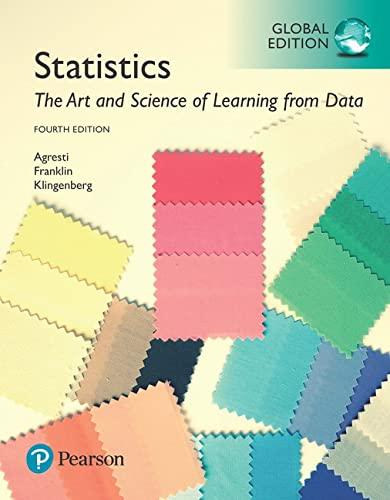Waiting time for doubles Most discrete random variables can take on a finite number of values. Let
Question:
Waiting time for doubles Most discrete random variables can take on a finite number of values. Let X = the number of rolls of two dice necessary until doubles (the same number on each die) first appears.
The possible values for this discrete random variable
(called the geometric) are 1, 2, 3, 4, 5, 6, 7, and so on, still separate values (and discrete) but now an infinite number of them.
a. Using intersections of independent events, explain why P112 = 1>6, P122 = 15>6211>62, and P132 = 15>62211>62.
b. Find P(4) and explain how to find P(x) for an arbitrary positive integer x.
Fantastic news! We've Found the answer you've been seeking!
Step by Step Answer:
Related Book For 

Statistics The Art And Science Of Learning From Data
ISBN: 9781292164878
4th Global Edition
Authors: Alan Agresti, Christine A. Franklin, Bernhard Klingenberg
Question Posted:






